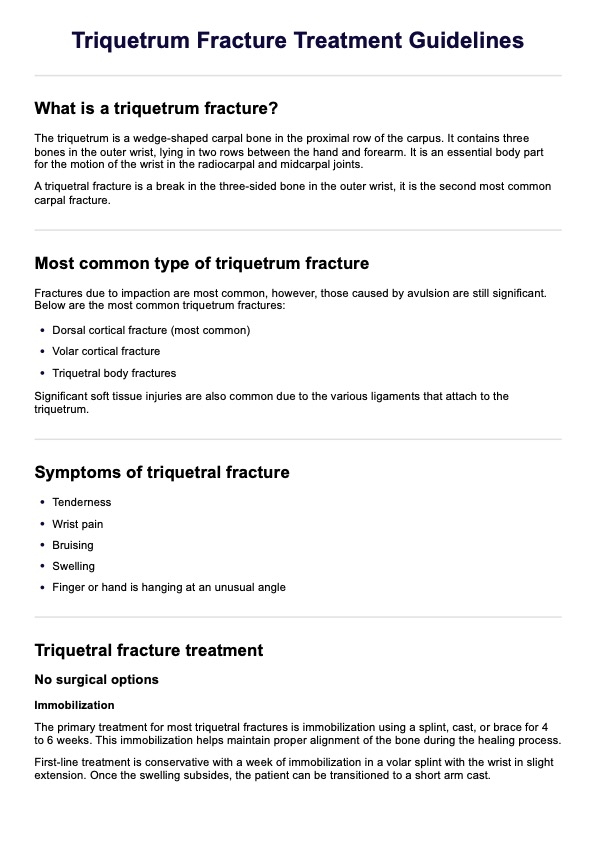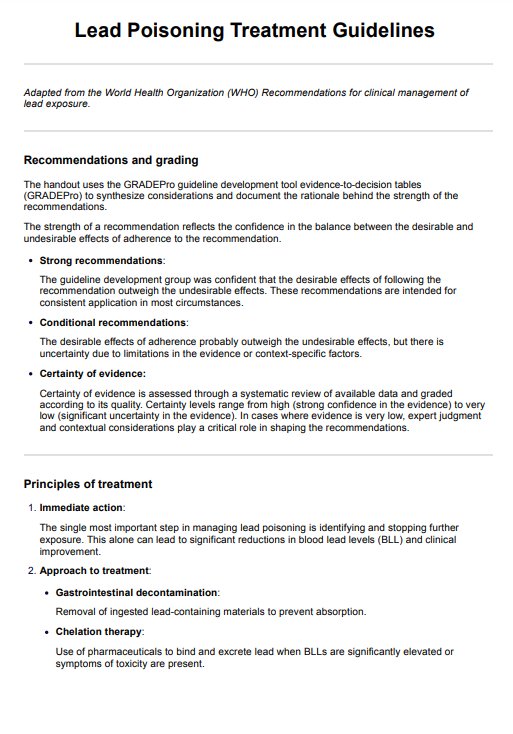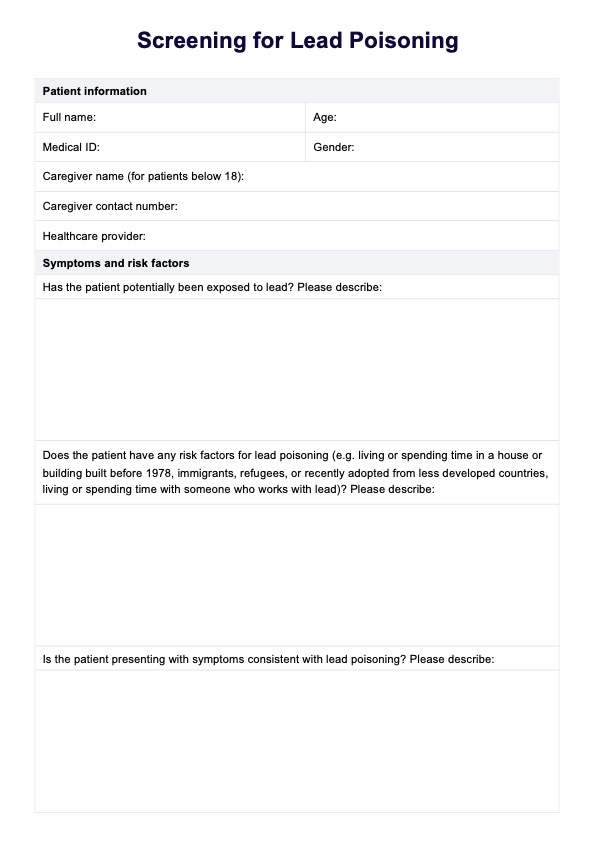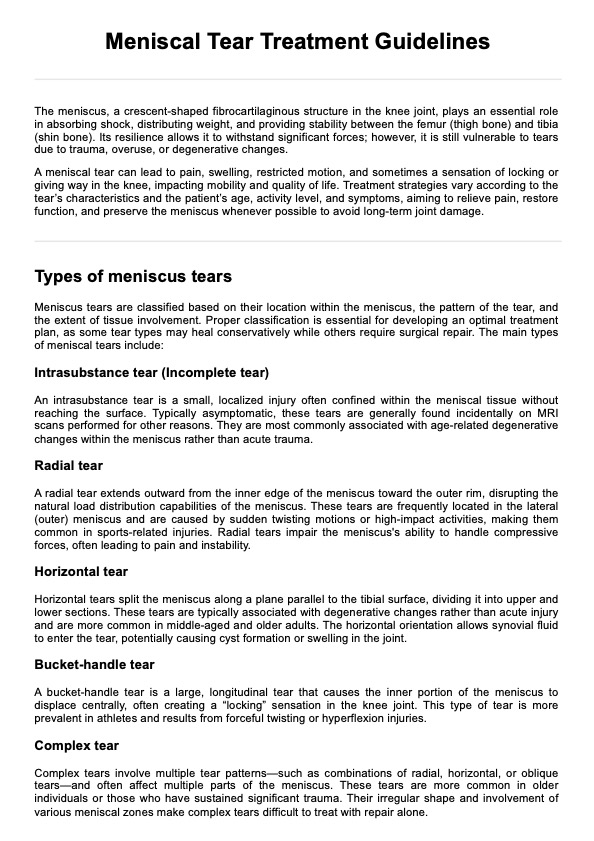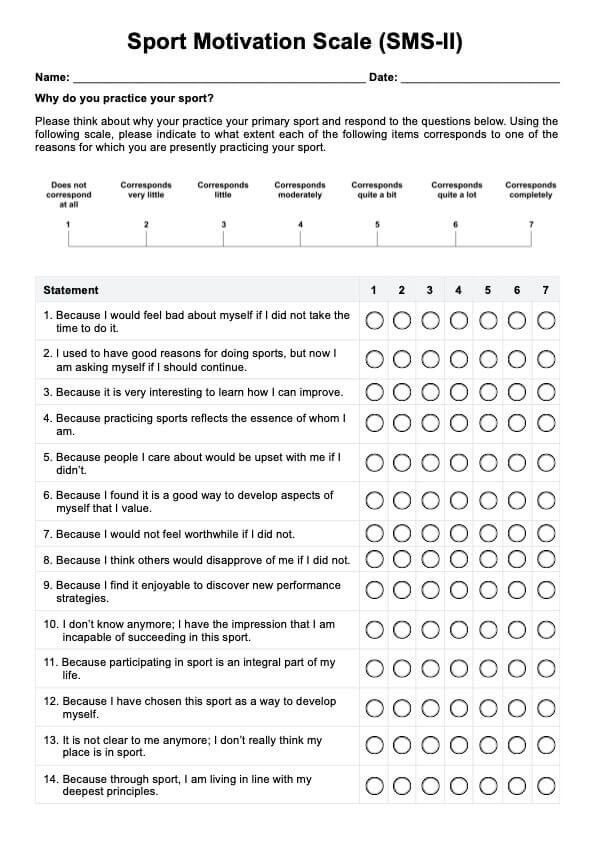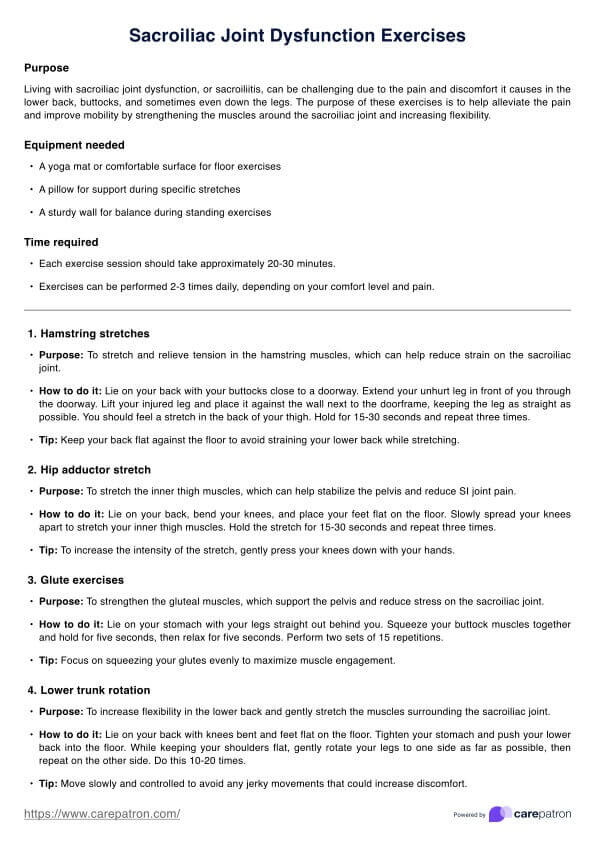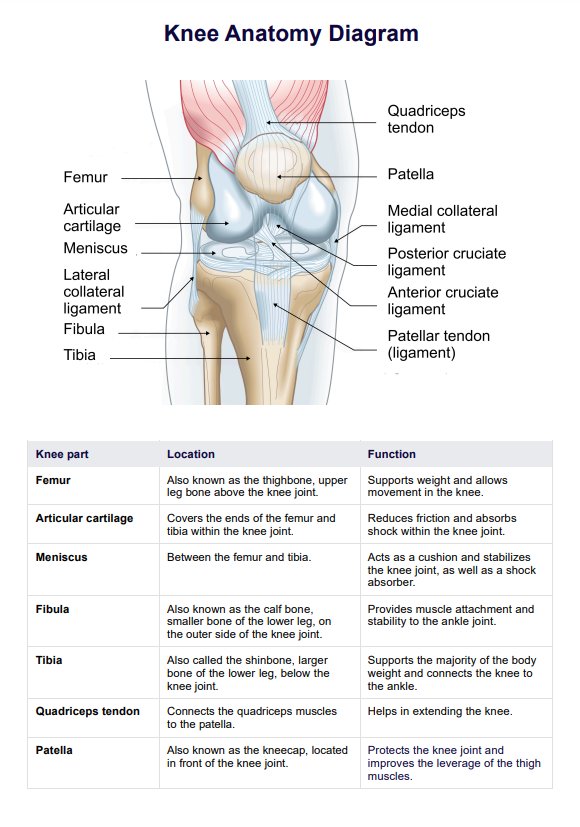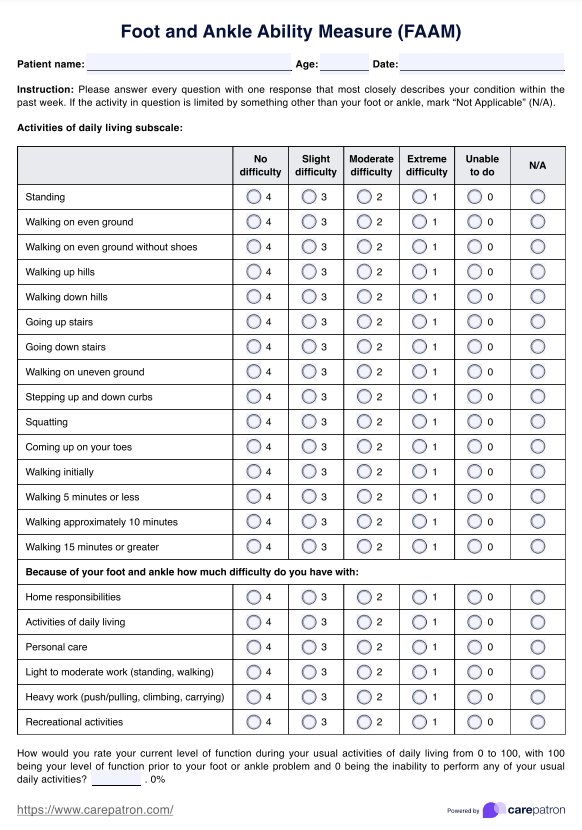Lisfranc Injury Treatment Guidelines Handout
Learn about Lisfranc injury treatment to understand how to effectively manage this type of foot injury. Access Carepatron's free PDF download here.


What are Lisfranc injuries?
Lisfranc injuries involve the disruption of the Lisfranc joint complex, which includes the bones and ligaments that connect the midfoot and forefoot. This type of injury can range from mild to severe, impacting the stability and function of the injured foot or Lisfranc ligament. A Lisfranc joint injury typically occurs due to direct trauma, such as a fall or an accident, which can lead to broken bones, fracture dislocations, or damage to the Lisfranc ligament. In severe cases, the injury may result in Lisfranc fracture dislocations, where the bones are both fractured and displaced.
Early diagnosis and treatment are crucial to prevent chronic pain and long-term disability. Physical therapy plays a vital role in the rehabilitation process and internal fixation surgery, helping to restore strength and mobility to the affected area. Understanding the complexity of the Lisfranc joint and the potential severity of a Lisfranc fracture highlights the importance of seeking medical attention for any suspected Lisfranc fracture-dislocation.
Lisfranc Injury Treatment Guidelines Handout Template
Lisfranc Injury Treatment Guidelines Handout Sample
Lisfranc treatment options
Managing Lisfranc injuries involves a structured approach across different phases of rehabilitation, especially physical therapy. The following approaches are often taken during this process:
1. Urgent orthopedic consultation
Prompt evaluation by an orthopedic specialist is essential for all suspected Lisfranc injuries. These complex injuries require expert assessment to determine the most appropriate treatment plan and prevent long-term complications. The orthopedic surgeon will perform a thorough clinical examination, review imaging studies, and discuss treatment options.
2. Conservative treatment
Conservative management may be appropriate for stable, non-displaced Lisfranc injuries. This typically involves immobilizing the foot in a non-weight-bearing cast or boot for 6-8 weeks. After this period, if midfoot pain subsides, patients can gradually resume activities while using an orthopedic insole to support the medial longitudinal arch. Close monitoring with regular follow-ups and repeat imaging is crucial to ensure proper healing and detect any displacement. Physical therapy often follows to regain strength and mobility.
3. Open reduction with internal fixation (ORIF) or midfoot fusion
For displaced Lisfranc injuries or those with significant instability, surgical intervention is often necessary. ORIF aims to realign displaced bones and stabilize them using screws and/or plates, preserving joint function where possible. In cases of severe joint damage or when ORIF is unlikely to provide adequate stability, midfoot fusion (arthrodesis) may be performed. This procedure permanently joins the affected joints to eliminate pain and instability.
4. Percutaneous surgery
Minimally invasive or percutaneous techniques have emerged as an alternative for treating certain Lisfranc injuries. This approach involves making small incisions and using specialized instruments to reduce and fixate the injury. Potential benefits include reduced soft tissue damage, lower infection risk, faster recovery times, and improved cosmetic outcomes. However, percutaneous surgery may not be suitable for all Lisfranc injuries, particularly those with severe displacement or comminution.
How to use our treatment guidelines handout template?
Carepatron’s Lisfranc Injury Treatment Guidelines Handout is a valuable resource for an orthopedic surgeon managing patients with various types of subtle injuries. Here’s how you can effectively use the template to enhance patient care:
Access and download Carepatron's template
First, access and download the Carepatron Lisfranc injury treatment handout template from Carepatron's Resource Library.
Introduce the handout to the patient
When meeting with a patient, introduce the handout and explain their condition, whether it's a low-energy Lisfranc injury or a high-energy Lisfranc injury resulting from a car accident. Highlight critical points such as the involvement of the midfoot joint, medical cuneiform, and second metatarsal.
Educate the patient with the handout
Use the handout to educate the patient about treatment options. Explain the differences between purely subtle Lisfranc injuries and those requiring Lisfranc surgery due to injured bones or serious complications.
Monitor progress
Review the handout regularly with the patient as you monitor their progress. Track improvements in weight-bearing and physical therapy adherence. Adjust the treatment plan as needed, especially for patients requiring surgical treatment to address mid-sprains or more severe Lisfranc fracture dislocations.
How can healthcare professionals benefit from our template?
Carepatron's Lisfranc Injury Treatment Guidelines Handout offers numerous benefits for healthcare professionals managing patients with Lisfranc injuries. Here are three key advantages:
Streamlined diagnosis and treatment planning
The handout provides clear guidelines for diagnosing and planning appropriate treatment for various Lisfranc injuries, from mild sprains to more severe cases that require surgery. It highlights critical elements such as the role of plantar ligaments, tarsometatarsal joints, and interosseous ligaments in severe injury.
Enhanced patient communication
Our template covers different types of Lisfranc injuries, ensuring patients understand why certain injuries result in significant stress or require surgical intervention. This improves patient compliance and satisfaction, whether dealing with a simple sprain or a more complicated case needing an orthopedic surgeon's expertise.
Improved treatment outcomes
The handout addresses appropriate approaches to different cases, providing strategies to mitigate these risks. This comprehensive approach helps achieve better outcomes and reduce recovery times, benefiting both the patient and the practitioner.
Commonly asked questions
Lisfranc injuries often require medical intervention; severe cases typically do not heal adequately without treatment.
The Lisfranc treatment protocol varies depending on the severity of the injury but generally includes immobilization, possible surgery for severe cases, and rehabilitation.
Untreated Lisfranc injuries can lead to chronic pain, instability in the foot, arthritis, and potentially permanent disability.
Healing time for Lisfranc injuries depends on the severity and treatment, ranging from several weeks with conservative measures to months following surgery.


















